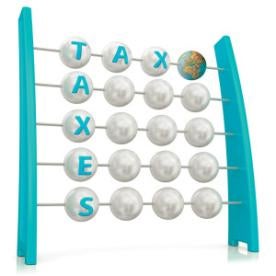As a company sources materials and those materials then flow through the company’s internal supply chain, tax issues can arise, including risk of corporate tax in jurisdictions where the company has no legal entity, transfer pricing inefficiencies for intercompany transfers, and indirect taxes. The time to identify opportunities to maximize tax efficiencies in the supply chain is often when changes are being made to the supply chain for other reasons as this provides a solid business purpose to support the changes.
Possible Supply Chain Tax Issues
Tax issues can arise throughout the supply chain lifecycle – from sourcing materials, to manufacturing, to selling the finished goods. The below discusses some examples of these tax issues, as well as ways to minimize any negative tax impact.
The supply chain often starts with sourcing materials. When sourcing materials from a particular location (e.g., China), there is often a team that provides oversight of the sourcing function from another location (e.g., Hong Kong). If the Hong Kong sourcing team frequently travels to China and is actively making decisions in China, there is potential for the Hong Kong company to be treated as having a taxable presence in China. Therefore, it is important to implement measures that limit the nature and location of the activities that may be undertaken by the Hong Kong employees.
Once the materials are sourced, the company will begin to manufacture the goods. Often a company will establish manufacturing sites and allow such sites to take the full burden of risk associated with manufacturing the goods. This can lead to local country arguments that valuable manufacturing intangibles are being created, resulting in a need to leave significant profit with the manufacturer. In a tax optimized situation, a company will engage the manufacturing entities as limited risk contract manufacturers so that the manufacturing location is left with a small operating margin and all value associated with the manufacturing process is returned to the principal company, which could be located in a low tax jurisdiction.
Once the goods are manufactured, the company may then sell them throughout the world. When selling the goods, it will be important to determine local country invoicing requirements, including whether the company is required to collect and remit indirect taxes (e.g., VAT) in connection with the sale of goods. In certain cases, VAT may not need to be collected and remitted if there is no local country presence where the goods are being sold.
When to Reexamine the Supply Chain
If your company has not yet established a tax optimized supply chain, any time is a good time to reexamine the current structure. There are, however, a few situations when it may be a particularly good time to perform such an analysis.
First, if any restructuring changes are planned for the supply chain, this could present an opportunity to revise intercompany agreements or contracts with suppliers to make more tax efficient transactions.
Second, immediately following an acquisition when two supply chains need to be integrated is a great time to identify the best components of each supply chain to make one integrated tax efficient system.
Finally, many companies may be looking at their supply chain flows in order to comply with local country changes resulting from anti-base erosion and profit shifting (“BEPS”) provisions. In October 2015, the OECD released their BEPS reports recommending countries take various actions to prevent BEPS type tax planning structures. As a result, many companies may feel now is the time to reexamine their supply chain in order to be in compliance with these recommendations, and in so doing may identify ways to create further tax efficiencies.
Tax issues can arise in a purely domestic context, as well as cross-border supply chains. The key is to be aware that tax issues can exist, and then work to ensure you have taken all possible steps to enhance and improve efficiencies in your supply chain.




 i
i


